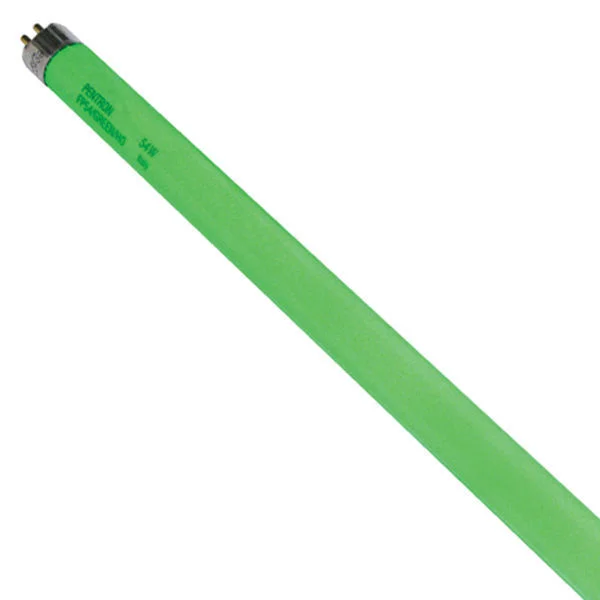When to Use Green Grow Lights
Color temperature is a major consideration for indoor gardening as plants react differently to red, blue, and green light wavelengths. Blue light (5000 Kelvin - 6500 Kelvin) is primarily responsible for leaf growth, making it ideal for starting seeds indoors. Red light (2000 Kelvin - 3000 Kelvin) is ideal during the flowering stage and is the primary factor in plant growth (height). But what about green light?
How Green Grow Lights Are Used
Gardeners primarily use green grow lights to water, navigate the grow room, or inspect plants during the dark cycle because the green lights do not interrupt the plant's "night" period. Green light mimics moonlight, so even if a plant is aware of the light, it does not trigger photosynthesis or photoperiod hormones. Green lights are also used to inspect plants, since seeing discoloration or health problems may be missed under red light. Reading through many forum discussions, most people see no effect on the plant yield and many assume the plants aren’t absorbing the light at all. However, a study published in the American Journal of Botany showed that when exposed to green lights, plants behave as though in shade or unfavorable light conditions. In nature, plants that sprout expecting to find sunlight but instead find shade, are rarely able to grow tall to reach the sun, so the shaded plant adapts a different grow strategy. Those green grow lights may be having more of an effect on plant growth than people think.
Effect of Green Lights on Plants
This is a highly debated topic with limited research studies compared to the effects of red and blue light on plant growth. The Journal of Experimental Botany compiled several studies showing that green light inhibited plant growth and blooming when used during the standard grow cycles (as opposed to only using green light at night). Conversely, if green light is used only during the dark cycle, when plants aren’t meant to be in bloom, the yield was not as affected. Almost all of the studies found that plants grown under any kind of green light, including full spectrum lights, were shorter and denser than plants grown under primarily red light. Michigan State also did a study on the effects of colored light on plant growth and found salvia splendens ‘Visa Red’ grew best under 50% green light combined with 25% red light and 25% hyper red light. This plant was 25% shorter than the plant grown under only red light, but 50% taller than all other light combinations. These results showed that blue light inhibited growth height more than green light.
When to Use Green Grow Lights
T5 fluorescent green glow light available at 1000Bulbs.com.
Green grow lights are one of the best options for when you need to see your plants without interrupting the dark cycle. Used during the day, green grow lights yield the best results when used on crops or flowers where you want short dense vegetation. Replacing blue lights with green and red lights once the seed sprouts gives plants some extra height, while increasing the leaf size so that the plant doesn’t look as thin and spread out. But if you’re wanting tall plants, use a handheld green light or turn the green lights off when you’re done working to limit exposure. Avoid green grow lights if you’re growing tomatoes or other vine plants.
If your neighbor’s indoor garden has you green with envy, grow lights from 1000Bulbs.com can help. Our expert staff can provide recommendations on color temperature and growing cycles based on what you’re looking to grow. We also have self-watering novice friendly hydroponic systems and soils for all your growing needs. Leave us a comment below or send us an email with your questions to get started on your indoor garden. Follow us on Facebook, Twitter, Pinterest, and LinkedIn to hear about our weekly coupons and special promotions.
Sources
American Journal of Botany
Journal of Experimental Botany
Maximum Yield Magazine
Michigan State University








